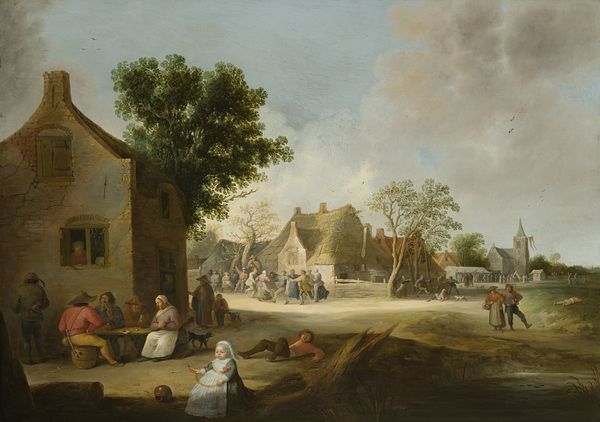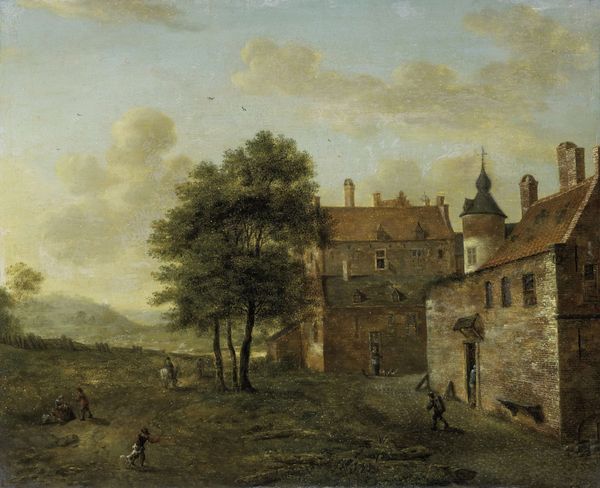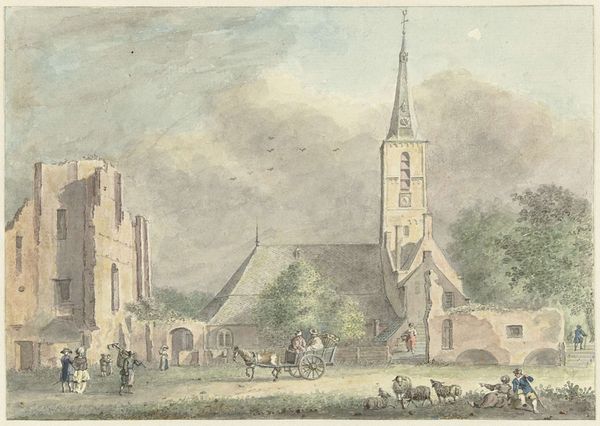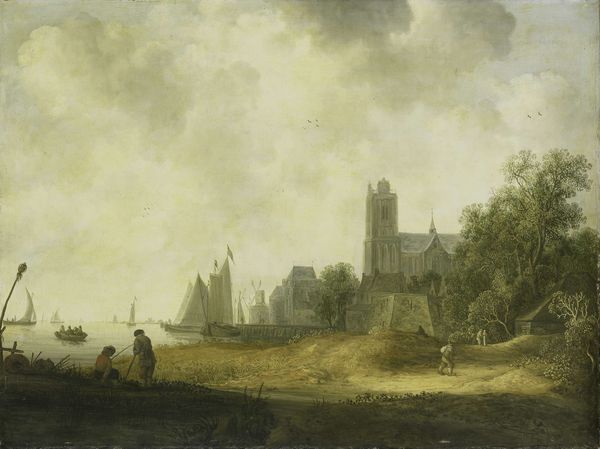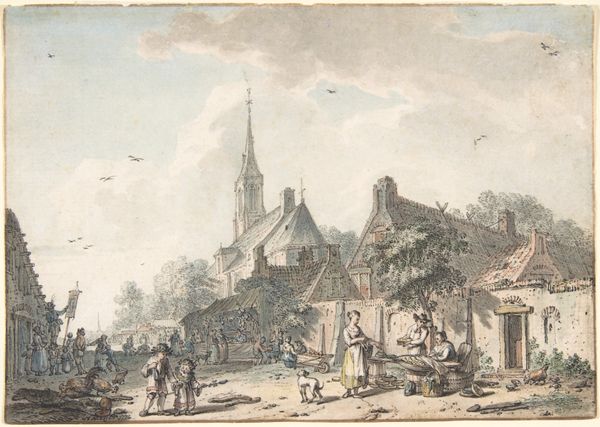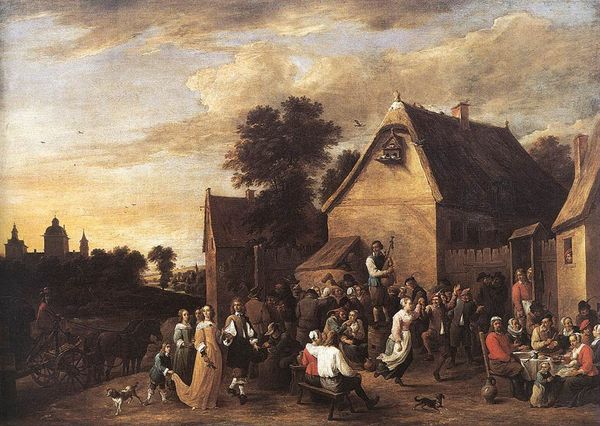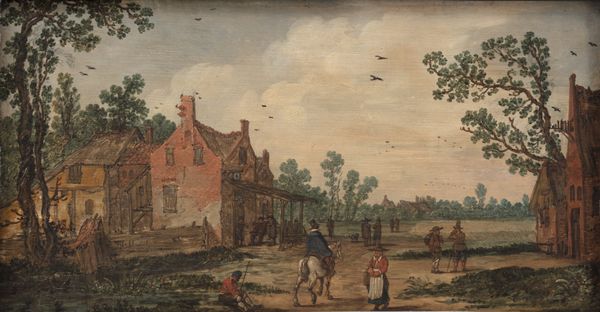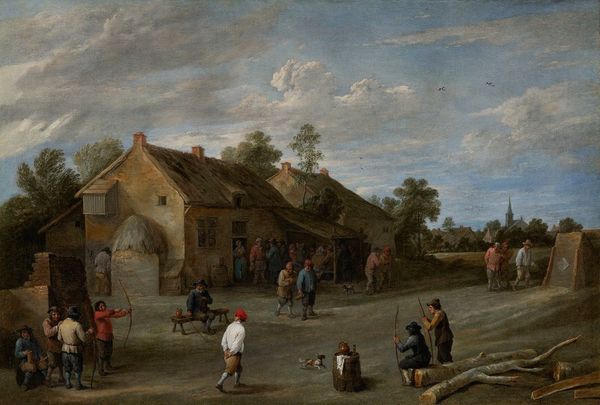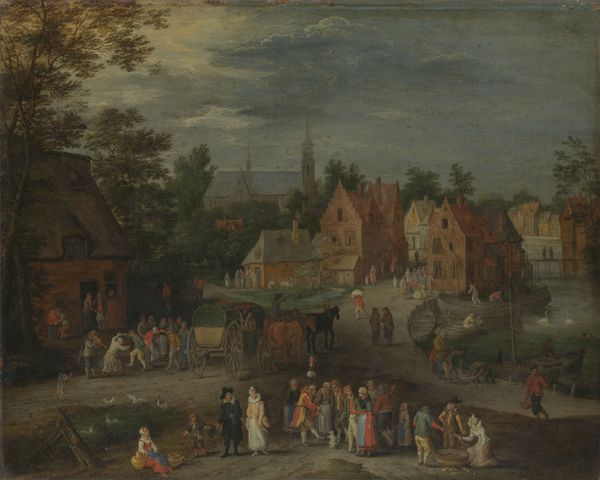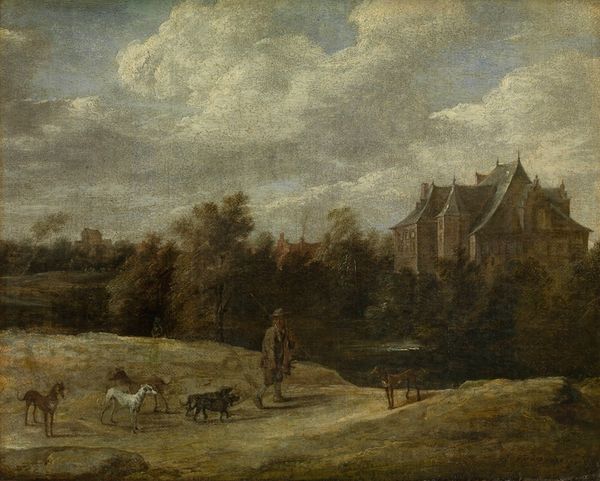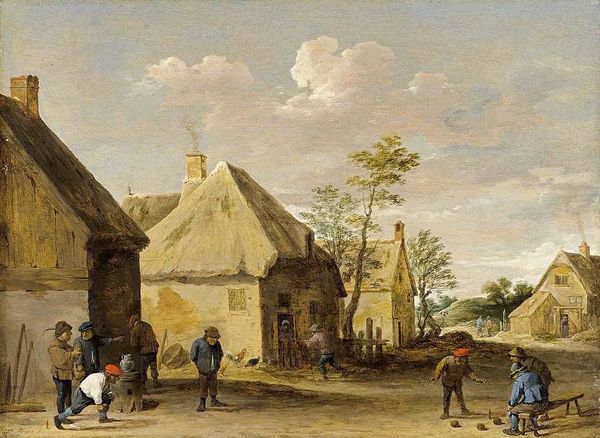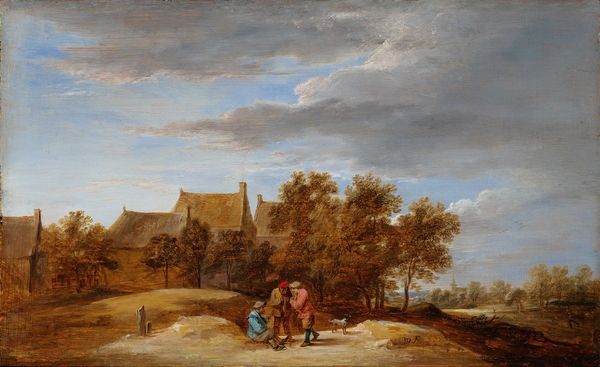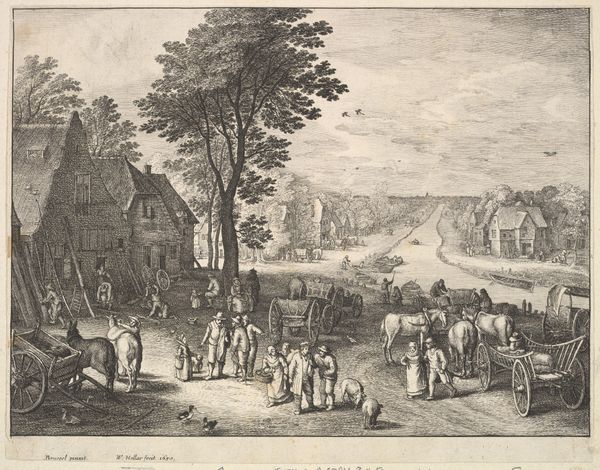
painting, oil-paint
#
dutch-golden-age
#
painting
#
oil-paint
#
landscape
#
charcoal drawing
#
oil painting
#
cityscape
#
genre-painting
#
realism
Dimensions: height 55 cm, width 75 cm, depth 9 cm
Copyright: Rijks Museum: Open Domain
Curator: Cornelis Droochsloot’s "Village Street," painted in 1664, presents a lively scene of everyday life in a Dutch village. Editor: It's immediately striking—the muted palette, dominated by earth tones, gives it an almost dreamlike, sepia quality. There's a hazy luminescence in the sky that casts a gentle glow over everything. Curator: Absolutely. Looking closely, you begin to notice the subtle variations in brushwork and pigment. Droochsloot used oil paint, allowing him to build layers of detail. Consider the materials accessible to Dutch artists during this era: the pigments, often imported, the linen canvases stretched taut, all contributing to the final product. The sheer volume of paintings being produced also suggests new systems of apprenticeship and workshop organization. Editor: Agreed, though my eye is drawn to the compositional arrangement—the placement of figures and structures leads the viewer's eye deliberately. Note how the diagonal path guides us from the lower foreground towards the church spire, creating depth. There is also a fascinating dynamic at play in contrasting the grounded horizontal landscape against the sharply ascending church spire. Curator: Precisely. And this attention to detail extends beyond pure aesthetics. Dutch genre paintings, such as this one, acted as documents of their time, embedding and normalizing societal values. We see peasants engaged in various activities, reflective of a social and economic hierarchy. Each interaction shown would be very important to everyday existence. Editor: Yet, there's a universality here as well. I'm getting an evocative picture beyond the factual. The interplay of light and shadow, coupled with the carefully considered composition, invokes a sense of tranquil, idealized village life, almost separate from the socio-economic readings that you highlighted. There's something about the rhythm of everyday tasks against the backdrop of communal structures and a grand skyscape. Curator: True. By investigating what went into making such scenes, we begin to consider ideas such as urban development, industrialization, and rural work from which modern life arose. Editor: Seeing the details helps understand how the painting evokes an idealized atmosphere—the soft light, gentle recession into space. It’s fascinating to note these structural aspects that convey the emotions and create symbolic power. Curator: Thinking about the historical forces behind paintings of this nature allows one to consider it as a production as well as a cultural product. Editor: And thinking about art aesthetically allows an observer to step back in time.
Comments
No comments
Be the first to comment and join the conversation on the ultimate creative platform.

